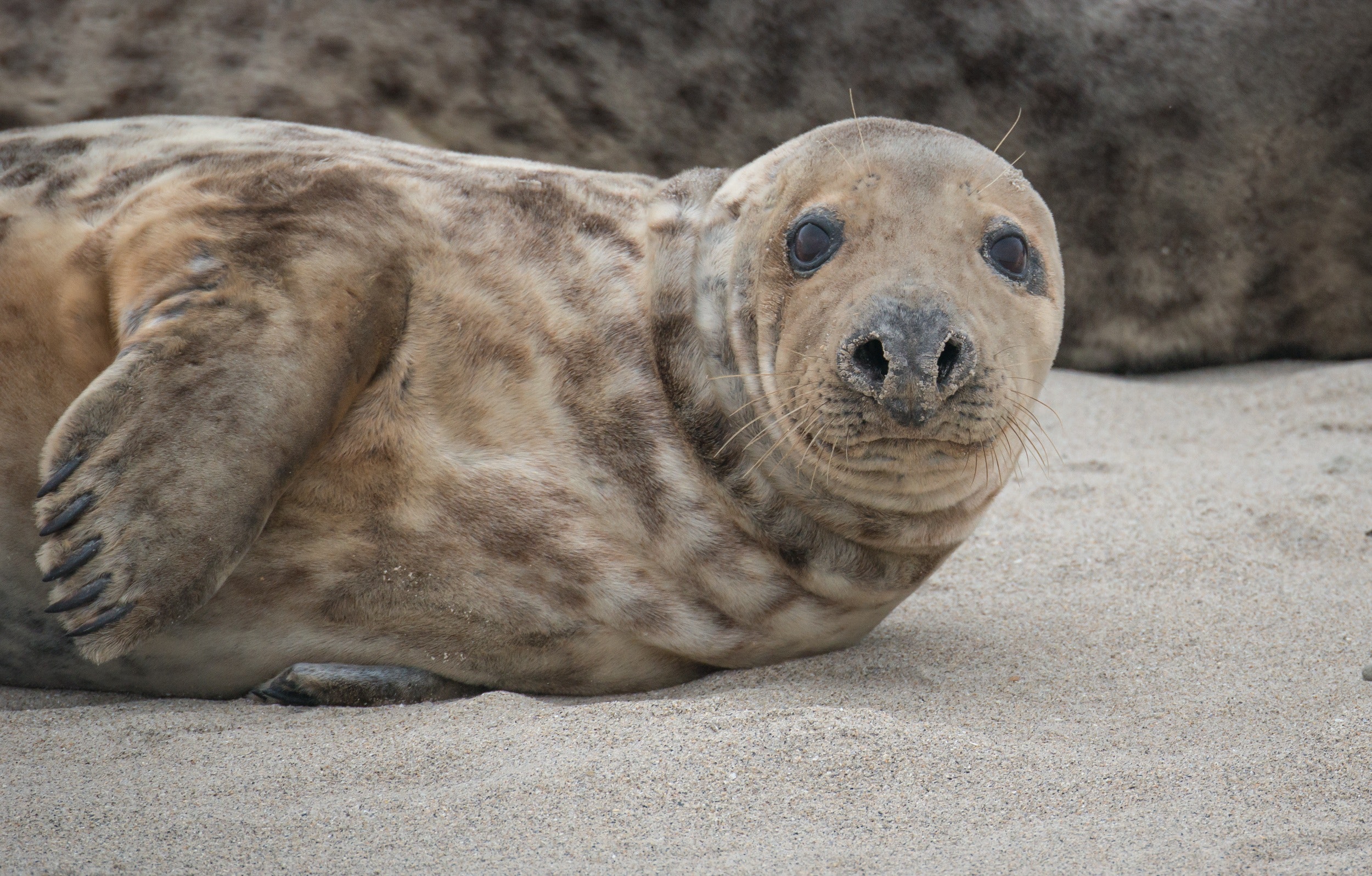
Contact: Marcus Reamer
Strategic Communications Director
301.608.3040 x 311
marcus@marinesanctuary.org
National Marine Sanctuary Foundation Awards $120,000 Grant to Center for Coastal Studies to Engage Local Fishing Community in Research and Conservation
WASHINGTON, DC – The National Marine Sanctuary Foundation announces a grant of $119,147 to the Center for Coastal Studies (CCS) to study bycatch and depredation in sink gillnet fisheries in and adjacent to Stellwagen Bank National Marine Sanctuary.
The research performed by commercial fishermen, CCS and partners at Woods Hole Oceanographic Institution will allow for a better understanding of the interactions between gillnet fisheries and predators such as dogfish and seals. Based on a pilot study funded by the Marine Mammal Commission, the newly funded study will obtain video documentation of the fish species that seals and other predators consume to better predict foraging behavior near fishing vessels. The footage collected and the study’s results will help commercial fishermen understand possible conflicts between gear and predators, including depredation and entanglement, by informing potential modifications to fishing practices.
“The National Marine Sanctuary Foundation believes in building partnerships across industries to solve conservation challenges. Working with the Center for Coastal Studies, Woods Hole Oceanographic Institution, and local fishermen, this project will help us learn more about how to avoid conflicts between fishing gear and protected species,” said Kris Sarri, President and CEO of the National Marine Sanctuary Foundation. “Conducting this research in Stellwagen Bank National Marine Sanctuary demonstrates how our marine sanctuaries are living laboratories full of opportunities for scientific discovery, conservation and sustainable business to maintain a healthy ocean.”
Using cameras fixed directly to fishing nets and an underwater remotely operated vehicle (ROV), fishermen and researchers will collect underwater imagery and behavioral data from predators that might interact with the fishery. Together they hope to analyze footage and images to better understand depredation, in which animals prey upon fish caught in fishing gear, which can lead to lost catches for fishermen and entanglement or injury for the animals.
Fishery interactions are a critical concern for marine mammal populations and ecosystem health worldwide. Additionally, depredation reduces the amount of sellable fish, damages gear, and reduces fishing time due to the necessity of mending nets and sorting usable catch.
“With fishermen and CCS/WHOI researchers working together to understand these interactions through a transparent and inclusive process, this is a great example of how unique collaborations have the potential to educate and inform both the working partners and policy makers and resource managers,” said Richard Delaney, President of the Center for Coastal Studies.
Growing conflicts between fisheries and populations of seals in the northeast U.S. spurred several meetings and studies to assess the perceived and actual cost of these interactions. Despite its importance for informing efforts to reduce marine mammal interactions with fisheries, the collection of underwater imagery and behavioral data to inform decision making has not been attempted in northeast U.S. sink gillnet fisheries.
“With the successful rebound of marine mammal populations in New England—seals in particular—fishery interactions and resulting frustrations build,” says WHOI researcher Andrea Bogomolni. “Working with our commercial fishing partners, we are asking questions and designing experiments together, relying on each of our unique areas of expertise to address these interactions.”
“We are adapting technology developed at WHOI for underwater exploration that can be mounted on fishing gear directly, or on ROVs,” adds researcher Alex Bocconcelli. “These data will allow us to understand what is happening below the surface, how depredation and bycatch occur, and ultimately, what we can do to reduce these interactions.”
The National Marine Sanctuary Foundation fosters innovative projects across the National Marine Sanctuary System’s 13 sites that are solution-oriented, scalable and transferable and develop strategic partnerships that promote the conservation and recovery of species and their habitats. To date, the Foundation has granted over $1.7 million to support projects in Stellwagen Bank National Marine Sanctuary.
###
The National Marine Sanctuary Foundation, established in 2000, is the official non-profit partner of the National Marine Sanctuary System. The Foundation directly supports America’s national marine sanctuaries through our mission to protect species, conserve ecosystems, and preserve America’s maritime heritage through on-the-water conservation projects, public education and outreach programs and scientific research and exploration.
The Center for Coastal Studies is a non-profit organization dedicated to understanding, preserving and protecting marine ecosystems and the coastal environment through applied research, education and public policy initiatives. The Center collaborates with institutions nationally and internationally and works with government agencies to promote environmental stewardship and develop policies and management strategies drawn from solid scientific research. CCS is known for its long-term studies of North Atlantic humpback and right whales; other key programs include Marine Geology, Water Quality Monitoring, Marine Fisheries Research and Marine Animal Entanglement Response.
The Woods Hole Oceanographic Institution is a private, non-profit organization on Cape Cod, Mass., dedicated to marine research, engineering, and higher education. Established in 1930 on a recommendation from the National Academy of Sciences, its primary mission is to understand the ocean and its interaction with the Earth as a whole, and to communicate a basic understanding of the ocean’s role in the changing global environment. For more information, please visit www.whoi.edu.
Stellwagen Bank National Marine Sanctuary encompasses 842 square miles of ocean, stretching between Cape Ann and Cape Cod. Renowned for its biological diversity and remarkable productivity, the sanctuary is famous as a whale watching destination and supports a rich assortment of marine life, including marine mammals, seabirds, fishes and marine invertebrates. The sanctuary’s position astride the historic shipping routes and fishing grounds for Massachusetts’ oldest ports also makes it a repository for shipwrecks representing several hundred years of maritime transport.
